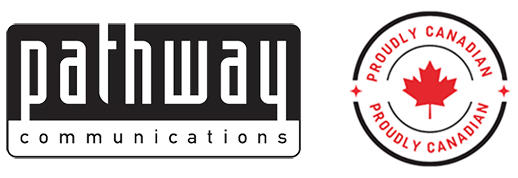When something breaks in your IT environment, who do you call? If your answer is “the help desk,” you’re not alone—but you might not be entirely accurate. Many businesses use help desk and service desk interchangeably. While they do sound similar and even overlap in some ways, there are key differences worth understanding, especially if you’re exploring better Contact Center Solutions in Toronto or anywhere else.
Let’s break it down clearly, without the jargon.
Help Desk vs. Service Desk: The Core Difference
At the most basic level, a help desk focuses on resolving immediate, day-to-day technical issues. Think password resets, printer problems, or software glitches.
A service desk, on the other hand, takes a broader and more strategic role. It’s not just about putting out fires—it’s about aligning IT services with business needs and long-term goals. It’s the bridge between IT and the rest of the organization.
Let’s go a little deeper.
What Is a Help Desk?
The help desk is your frontline support team. It’s reactive by design. When an end user runs into a problem, they reach out to the help desk for a fix. The goal here is simple: restore functionality quickly.
Typical Help Desk Functions:
- Troubleshooting technical issues
- Resetting passwords
- Answering user questions
- Providing step-by-step support
- Logging and managing incident tickets
Who uses help desks? Most often, smaller businesses or organizations with straightforward IT needs rely on help desks. They offer a quick-response mechanism and are usually part of a larger IT department or outsourced as part of contact center support.
What Is a Service Desk?
Now, picture the service desk as a more evolved version of the help desk. It handles incidents and service requests, but it’s also proactive. It looks at the bigger picture and works to improve IT processes, not just respond to issues.
Typical Service Desk Functions:
- Handling incidents and service requests
- Managing change requests
- Providing self-service portals for users
- Supporting IT asset management
- Monitoring IT services and generating reports
- Integrating with broader business goals
Service desks are built around ITIL (Information Technology Infrastructure Library) best practices. ITIL is important, especially for organizations focused on growth, compliance, and long-term planning.
Key Differences at a Glance
| Feature | Help Desk | Service Desk |
| Scope | Narrow (technical fixes) | Broad (strategic IT service) |
| Approach | Reactive | Proactive + Reactive |
| Alignment with Business | Low | High |
| Based on ITIL | Not necessarily | Yes |
| Type of Requests | Mostly incidents | Incidents + service requests |
| Reporting & Analytics | Minimal | Comprehensive |
| Self-Service Portals | Rare | Common |
Why Do the Differences Matter for Your Business?
It comes down to what you need from your IT support. If your business is small and your needs are simple, a help desk might be enough. But if you’re growing, relying more on tech, or thinking long-term, a service desk provides the structure and scalability you need.
Generally, a service desk reports higher IT satisfaction scores compared to those with only a help desk. That’s because service desks don’t just fix problems—they help prevent them. Plus, they empower employees with self-service tools and offer insights through real-time reporting. That’s not just smart IT—it’s smart business.
How Contact Center Solutions Fit In
Whether you need a help desk, a service desk, or a blend of both, your contact center plays a key role. It’s the front line of communication with users, customers, and internal teams. If your contact center isn’t streamlined and effective, even the best IT support structure can fall flat.
Here’s where it gets real: Users expect fast, seamless support around the clock. They don’t care what you call it—they just want it to work.
That’s why integrating your IT support with the right Contact Center Solutions in Toronto (or wherever your business operates) is critical. A modern contact center isn’t just a call hub—it’s a multi-channel powerhouse that handles voice, chat, email, social, and even AI-driven self-service.
Help Desk or Service Desk: Which One Do You Need?
Let’s look at a few real-world scenarios.
- A startup with 20 employees
Your team just needs quick help when something breaks. A basic help desk, possibly outsourced, gets the job done. - A mid-sized company scaling fast
Now you need more structure. You’re introducing new tools, onboarding staff frequently, and want to track trends. A service desk is the way to go. - An enterprise managing multiple departments and locations
You’re juggling compliance, change management, and advanced reporting needs. A full-scale service desk integrated into your contact center ecosystem is non-negotiable.
The Blurred Line—and Why That’s Okay
Here’s the truth: in practice, many organizations operate with a hybrid model. They have help desk teams that handle tickets, but they’re also adopting service desk elements like knowledge bases, automated workflows, and performance metrics.
The real takeaway? It’s not about choosing one label over the other. It’s about building the right support framework for your business and your people.
How Pathway Can Help
Navigating IT support structures while managing customer experience can feel overwhelming. That’s why we at Pathway Communications offer integrated, flexible Contact Center Solutions in Toronto designed to support your help desk, service desk needs, or anything in between.
Whether you’re looking to offload technical support, modernize your contact channels, or boost satisfaction scores, we’re here to help you build something that works now and scales later.
Let’s simplify your support, streamline your systems, and keep your team (and your customers) moving forward.
Ready to transform your contact center into a support powerhouse? Let’s talk. Pathway’s here to help you build smarter, faster, and stronger.


